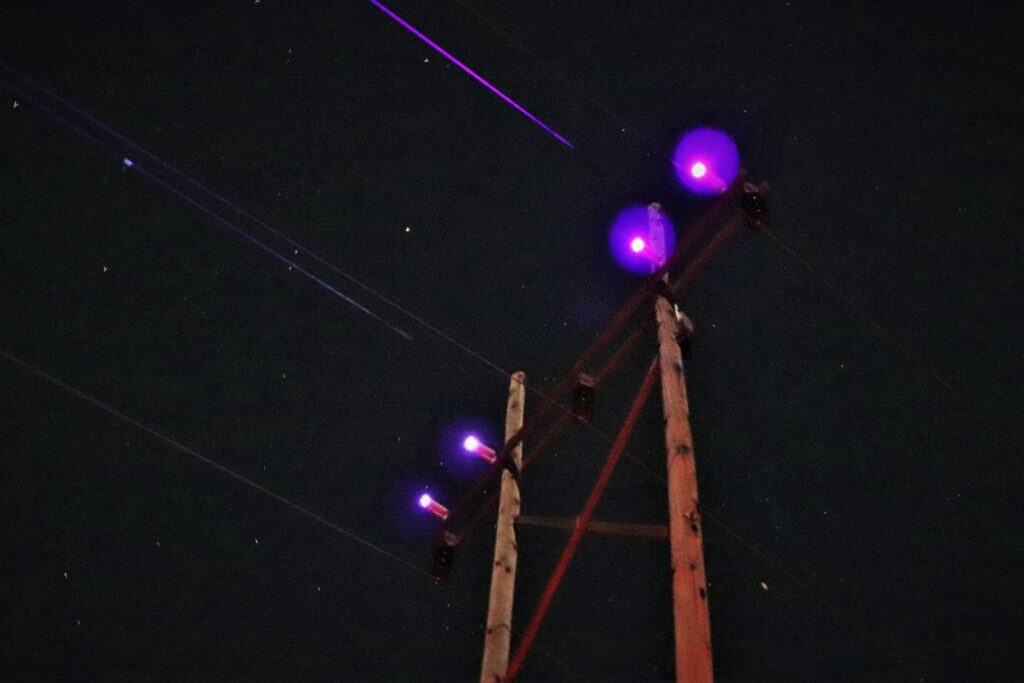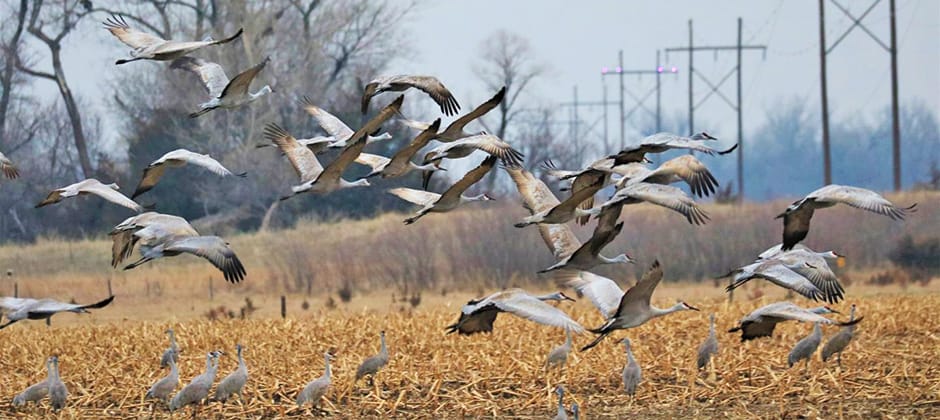Share this article
‘Shot in the dark’: UV light deters cranes from power lines
Mounting ultraviolet lights that shine on power lines reduced sandhill crane (Grus canadensis) collisions by 98 percent in a key Nebraska migration stopover for the birds. The technique protects the cranes, researchers found, without causing light pollution that bothers humans.
“One problem we have when we mark power lines is, if we use any kind of lighted marker at night, people see it and complain,” said TWS member James Dwyer, a research scientist with the consulting firm EDM international, Inc.
Dwyer and his colleagues, a team of biologists and electrical engineers, wanted to test if UV light, which birds can see but people can’t, would help deter the cranes.
The cranes see shorter wavelengths of light, Dwyer said, so he and his colleagues were hopeful they would be sensitive to the UV lights. “It was a shot in the dark based on intuition,” he said.
Previously, at Nebraska’s Iain Nicolson Audubon Center, where power lines cross the Central Platte River along the birds’ migration corridor, managers used PVC coils and reflective markers to deter the birds, but those didn’t seem to work.

The Avian Collision Avoidance System shines ultraviolet lights on power lines to prevent sandhill crane collisions. ©James Dwyer, EDM International
For their study, which was published in The Condor: Ornithological Applications, Dwyer and his team wanted to test out whether the mounted UV lights — which they dubbed the Avian Collision Avoidance System, or ACAS — would make a difference in the area.
They randomly chose when the ACAS, which shined along the length of the wire between two towers, would be on or off each night. Then, they observed the birds through military grade night vision scopes to check for collisions.
The team detected a 98% reduction in collisions when the ACAS was turned on. They also discovered 82% fewer dangerous flights with the UV lights turned on. Only one bird collided with the wire when the ACAS was on, while 48 sandhill cranes collided when it was turned off.
“We thought we might get, in baseball terms, a base hit or get to second, but this was a home run,” Dwyer said.
But Dwyer said their work isn’t over yet. They need to understand whether the ACAS works on other birds, different habitats, and on longer spans of wire. He particularly wants to see if the UV light may help reduce collisions with cell towers in areas where large numbers of passerine collisions occur with no effective mitigation. The system may also prove useful around wind turbines, he said.
Header Image:
Sandhill cranes are at risk of colliding with power lines as they approach their roosting sites at dusk.
©James Dwyer, EDM International








